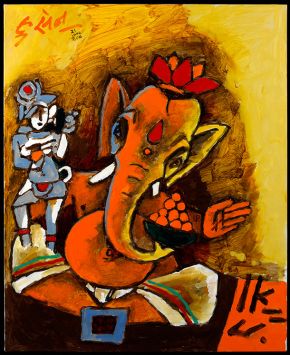Closed exhibition - M.F. Husain: Master of Modern Indian Painting
M.F. Husain: Master of Modern Indian Painting - About the Exhibition
Maqbool Fida Husain, known as M.F. Husain (1915-2011), was one of India’s most eminent artists. Born in Pandharpur, his early years were spent in Indore. Husain began his career as a painter of cinema hoardings after attending art school in Bombay (now Mumbai). Using freehand drawing and vibrant colour, he depicted Indian subject matter in the style of contemporary European art movements, particularly Cubism.
Indian Civilization is an ambitious series of eight triptych paintings, commissioned in 2008 by Mrs Usha Mittal as a tribute to the richness of India’s history. Each panel explores a different theme, together creating a personal vision of India, what Husain called ‘a museum without walls’.
Interweaving religious and symbolic iconography with historic figures and events, the paintings also incorporate memories from the artist’s own life. Originally envisaged as a series of 96 panels, Husain was still working on the paintings at the time of his death in 2011.
The Indian Civilization series
Husain marked the ceremonial beginning of his Indian Civilization series by painting the Hindu deity Ganesha. Known as the remover of obstacles, Ganesha is a patron of the arts and letters, worshipped at the beginning of any endeavour. He is represented as a four-armed man with an elephant head, shown here with an ancient terracotta goddess figure at his side.
Click on images to reveal larger versions and handwritten memories from Husain's own life.
Three Dynasties
Husain celebrates three ruling dynasties from India’s long and tumultuous history. He places the ancient Mauryan civilization centrally between two invading rulers, the Muslim Mughal dynasty (1525-1857) and the British Raj (1858-1947).
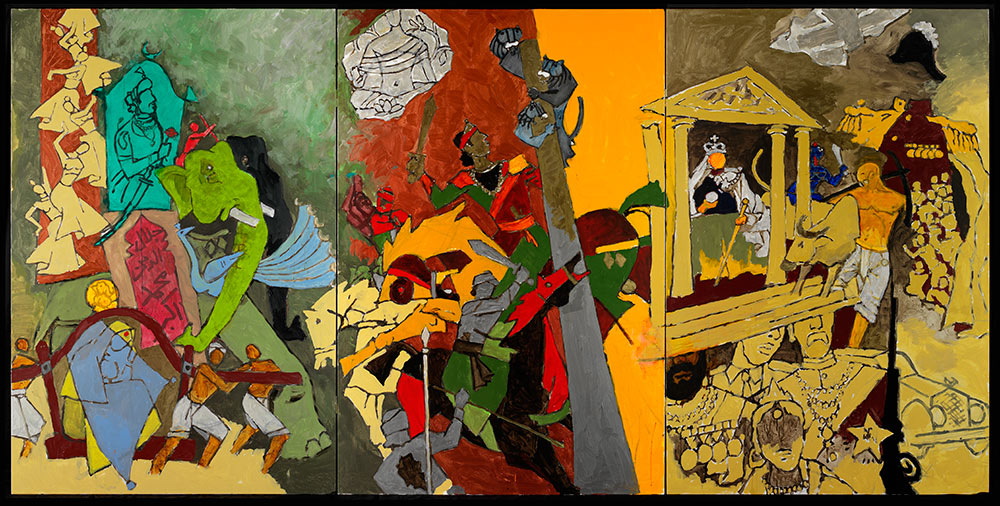
M.F. Husain, Three Dynasties, 2008-2011. Courtesy of Usha Mittal, © Victoria and Albert Museum, London
Language of Stone
‘How the language of stone surpasses the language of man.’ Husain uses the words of the poet Rabindranath Tagore to pay tribute to India’s great sculptural heritage. To him, they are a collection of ‘poems in stone’.
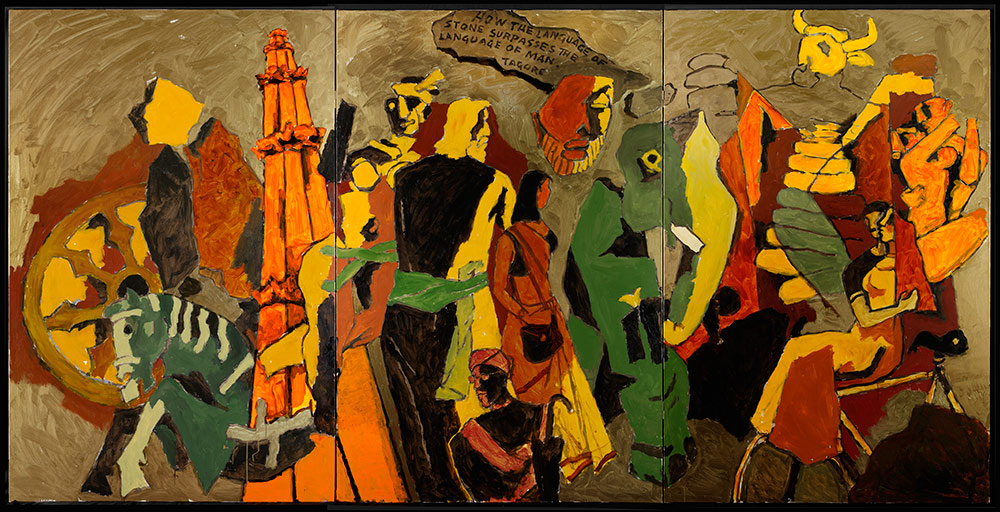
M.F. Husain, Language of Stone, 2008-2011. Courtesy of Usha Mittal © Victoria and Albert Museum, London
Traditional Indian Festivals
Husain captures the colour and spirit of Indian festivals. These ancient celebrations and rituals reflect the passing of time and show the enduring role of religion and tradition in Indian culture.
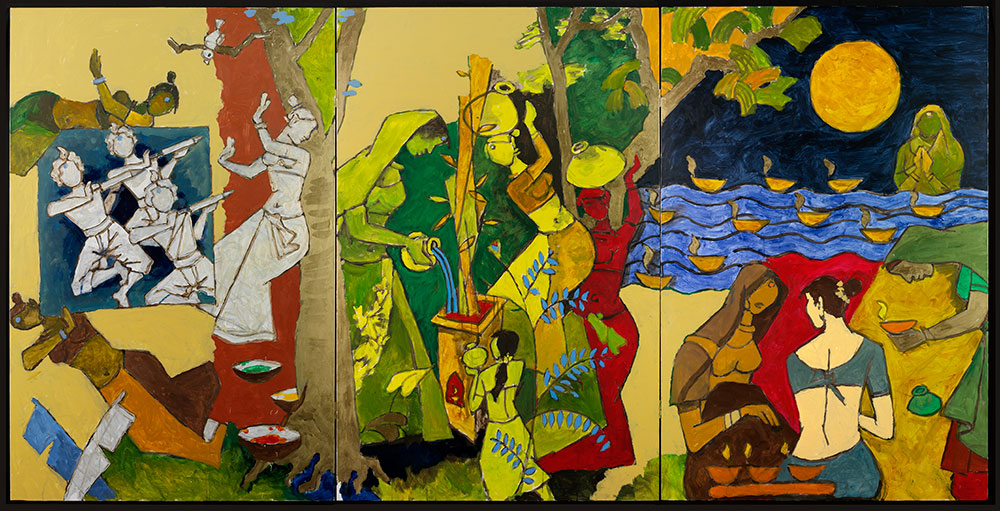
M.F. Husain, Traditional Indian Festivals, 2008-2011. Courtesy of Usha Mittal, © Victoria and Albert Museum, London
Indian Households
Husain reflects on the domestic lives of India’s citizens, showing the daily routines of three ordinary urban families. The major religions of India are represented, with three generations sharing their homes and their faith.
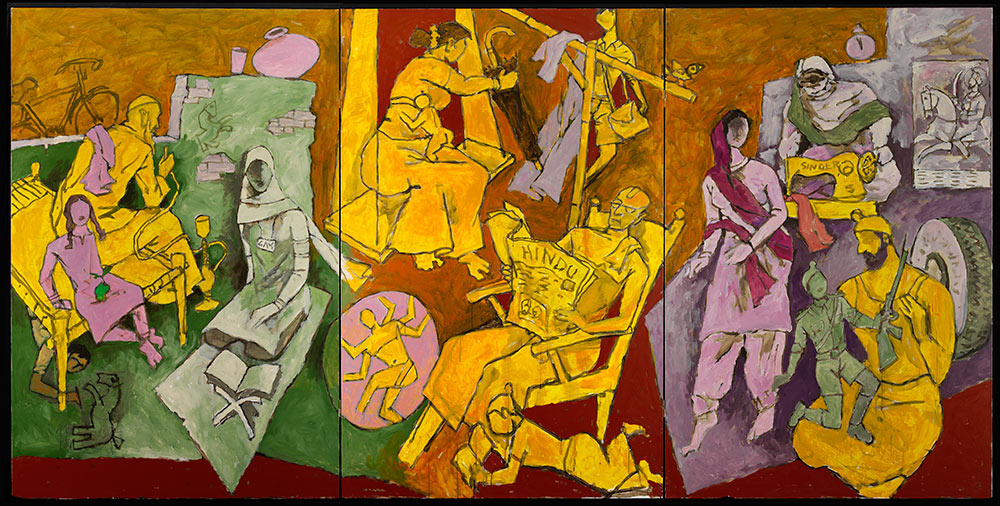
M.F. Husain, Indian Households, 2008-2011. Courtesy of Usha Mittal © Victoria and Albert Museum, London
Modes of Transport
Husain presents the multiple journeys of India’s citizens as a metaphor for the journey of life. He captures the frenetic pace of everyday living and the disparities of the modern world.
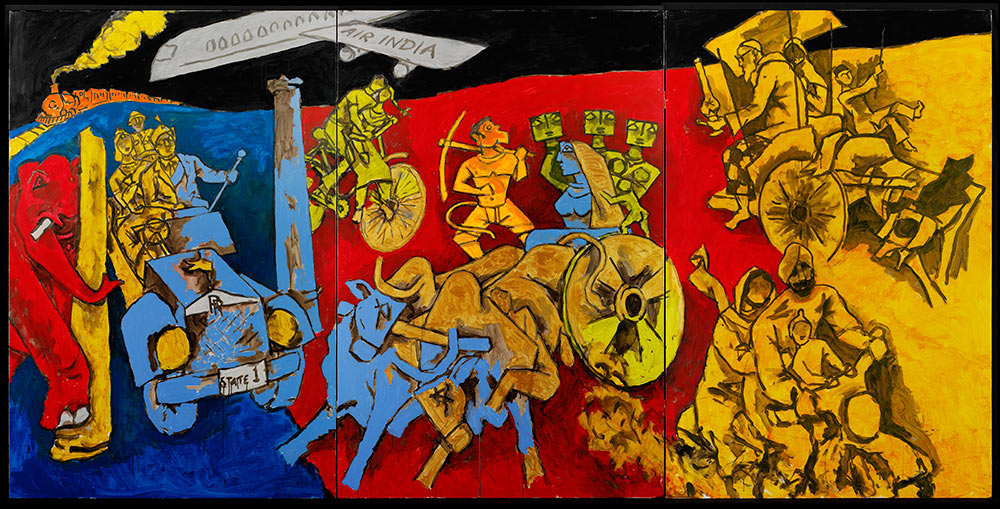
M.F. Husain, Modes of Transport, 2008-2011. Courtesy of Usha Mittal © Victoria and Albert Museum, London
Tale of Three Cities
Three of India’s great cities assume different symbolic meanings. Delhi represents India’s nationhood, Varanasi its spiritual centre and Kolkata its culture and activism.
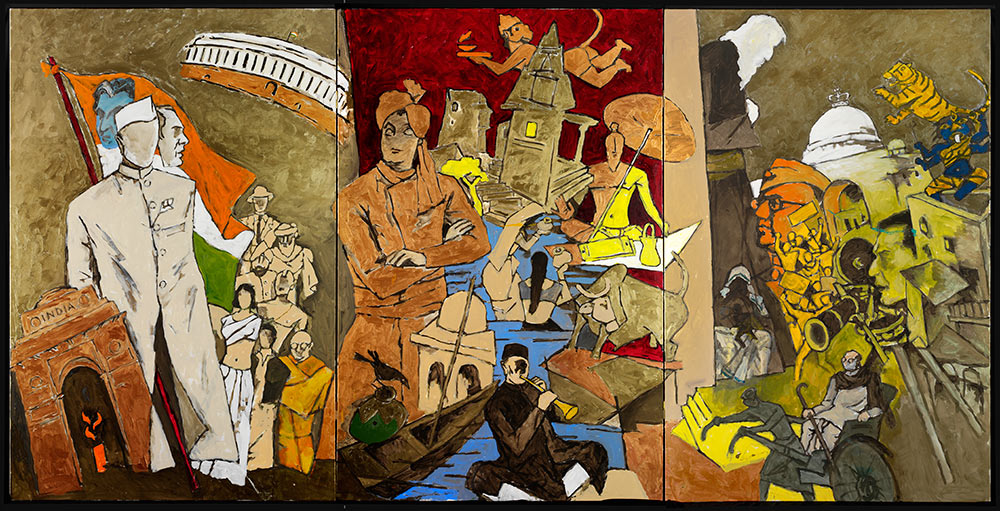
M.F. Husain, Tale of Three Cities, 2008-2011. Courtesy of Usha Mittal, © Victoria and Albert Museum, London
Indian Dance forms
Husain captures the regional diversity of Indian dance forms, an integral part of high culture and festival ritual. Reflecting his love of both dance and the cinema, Husain explores how movement is captured on film.
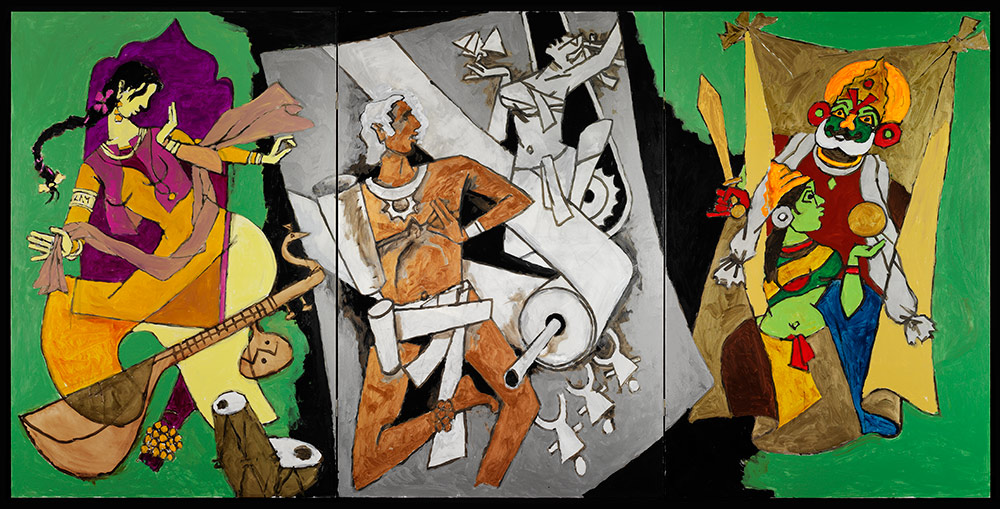
M.F. Husain, Indian Dance forms, 2008-2011. Courtesy of Usha Mittal, © Victoria and Albert Museum, London
Hindu Triad
Husain depicts the Trimurti, the three principle gods of the Hindu religion. Brahma is the creator of the universe, Vishnu its protector and preserver and Shiva is its destroyer.
With thanks to Mrs Usha Mittal
With kind support from Christie's
Contents
What's on at the V&A?

Explore the V&A's huge range of events about the designed world, from blockbuster exhibitions to intimate displays and installations, world-class talks, casual and accredited training courses and conferences with expert contemporary speakers. Browse, search and book onto our unrivalled event programme for all ages and levels of expertise.
Book onto a great event now